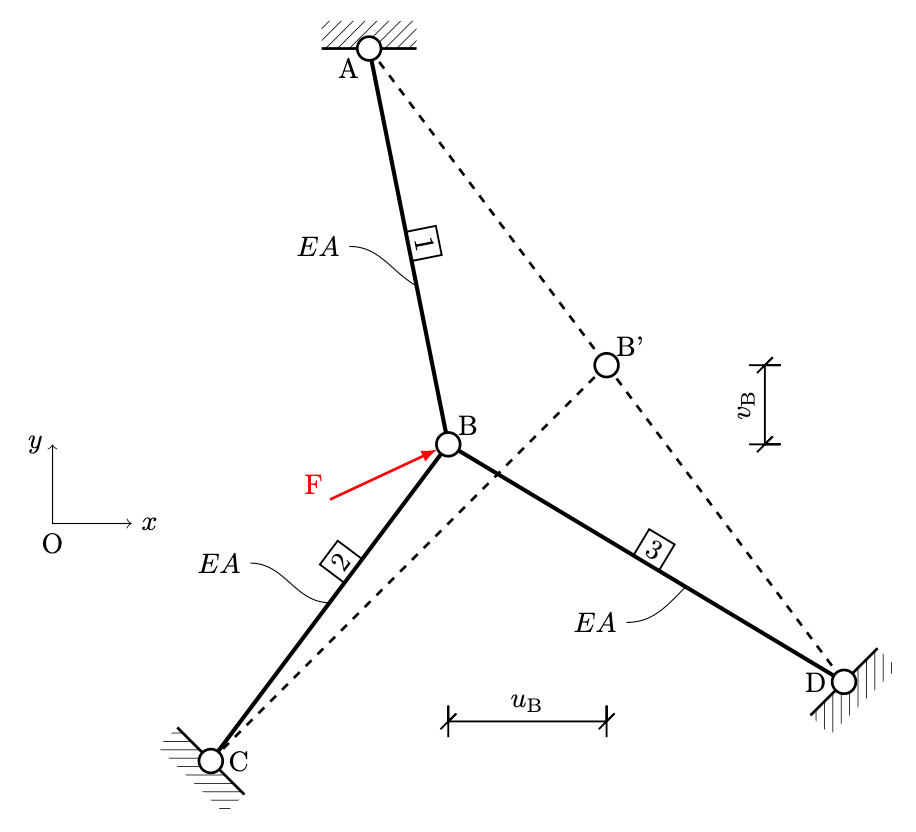The “Clebsh example”, a simple truss structure that A. Clebsh solved by the displacement method.
\documentclass[tikz,border=10pt]{standalone}\usepackage{pgfplots}\pgfplotsset{/pgf/number format/use comma,compat=1.16}\usepackage[T1]{fontenc}\usepackage[utf8]{inputenc}\usepackage{stanli} % TikZ Library for Structural Analysis by Jurgen Hackl\usetikzlibrary{calc,intersections,patterns}\begin{document}\begin{tikzpicture}[scale=1]%\draw [help lines] (0,0) grid [step=1] (8,9); %useful for construction% Coordinates system\draw (-2,3) node[below] {O};\draw[<->] (-1,3) node[right] {$x$}-|(-2,4) node[left]{$y$};%point\point{A}{2}{9};\point{B}{3}{4};\point{B'}{5}{5};\point{C}{0}{0};\point{D}{8}{1};%beams\beam{2}{A}{B}[0][0];\beam{2}{B}{C}[0][0];\beam{2}{B}{D}[0][0];\beam{3}{A}{B'};\beam{3}{B'}{C};\beam{3}{B'}{D};\notation{4}{A}{B}[1];\notation{4}{C}{B}[2][0.6];\notation{4}{D}{B}[3];%supports\support{3}{A}[180];\support{3}{C}[-45];\support{3}{D}[45];%hinges\hinge{1}{A}\hinge{1}{B}\hinge{1}{C}\hinge{1}{D}\hinge{1}{B'}%load force


